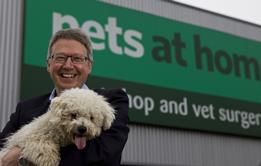Despite the obvious and the not-so-obvious differences between a vet’s practice and a GP surgery, there is potential to share learning. Natasha Curry writes

On the surface, there are few similarities between a vet’s practice and a GP surgery.
However, after reading Nick Wood’s interview – his description of small independent practices, a trend towards scaling up, and growing demand for a convenient high quality service – it is striking how many parallels there are.
The similarities
In both professions, there is an acceptance that scaling up into larger delivery units is the future. In the past decade, we have seen the emergence of more large GP organisations as practices increasingly joined together in a variety of federations, networks and super partnerships.

Concerns about long term survival and the need for sustainable business models are driving this change in both fields. Operating in large entities can offer economies of scale, not just in back office functions but also in terms of delivering extended service contracts.
‘There is acceptance that scaling up into larger delivery units is the future’
Just as many veterinary practices offer diagnostics and surgery, some larger GP organisations have started to take on such contracts, increasingly drawing services out of hospital.
Perhaps where the models begin to diverge is in the culture. Members of the Nuffield Trust’s GP learning network report that having a slick corporate image can be unhelpful in the world of general practice.
Differences exist
Despite the clear benefits of having the structure of a corporate entity, a corporate image can give rise to resistance among patients and potential GP recruits, who stress the importance of belonging to an organisation with an “NHS ethos”.
Further differences are apparent in ownership and governance. The veterinary model appears targeted towards new businesses, whereas in the world of general practice, the large entities are more often created through established practices coming together in mergers or contractual arrangements.
‘Differences are apparent in ownership and governance’
In addition, there appears to be a clear demarcation between the central support function and the clinical autonomy afforded to individual vets. GP models vary but often the overarching entity has a significant influence over clinical quality, embedding consistent processes across practices to drive clinical performance.
Despite the obvious and the not-so-obvious differences, there is potential to share learning. The idea that really struck a chord with me was the mentoring scheme designed to develop new graduates, not just clinically but also in terms of personal and business skills.
Like veterinary school, medical school is not preparing GPs for the new world of business management and collaboration. To echo Mr Wood’s analysis: despite much change in recent years, there is still some way to go and room for growth.
Natasha Curry is a senior fellow in health policy at the Nuffield Trust. She leads its two year programme of research into the future of general practice and primary care.
Seven day services: Setting up shop on the high street

What GPs can learn from vet practices
- 1
 Currently
reading
Currently
reading
There's potential to share learning from vets
- 3
































4 Readers' comments